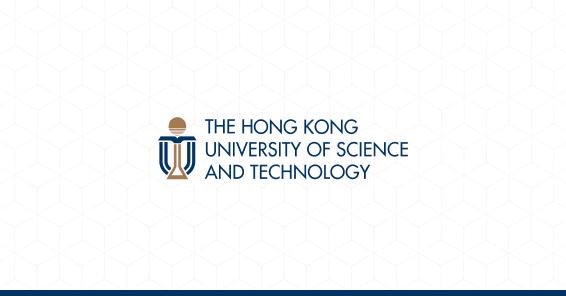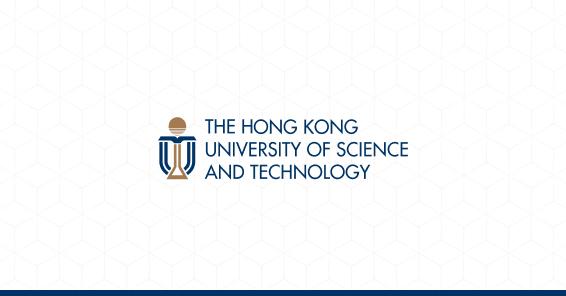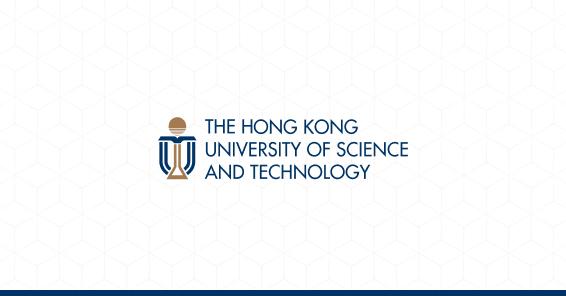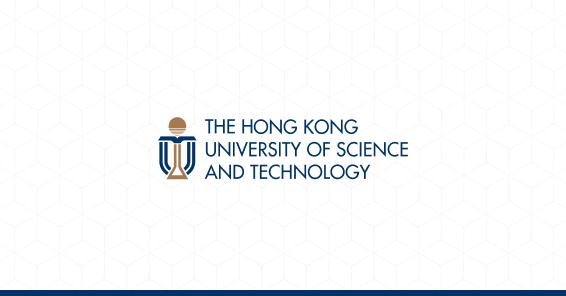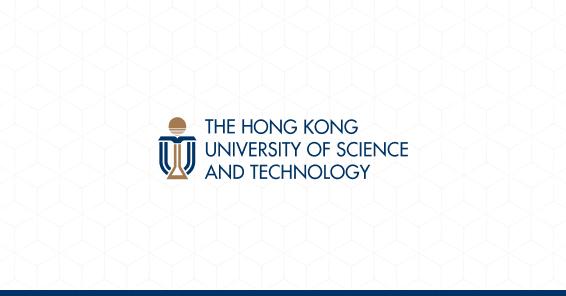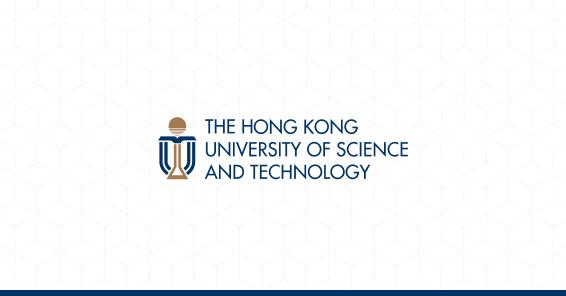News & Events
2012-07-30
A research publication by Prof Zikang Tang and Prof George Wong both of the Department of Physics at the Hong Kong University of Science and Technology (HKUST) titled ‘Room-temperature ultraviolet laser emission from self-assembled ZnO microcrystallite thin films’ was recognized to be amongst the top 50 most cited papers over the past 50 years in Applied Physics Letters, one of the world’s most esteemed scientific journals. This is also the only research developed in Greater China region that made it into the top 50.
Prof Tang, Prof Wong and their research team discovered room-temperature ultraviolet (UV) lasing using high-quality nano-structured ZnO semiconductors in 1998, defying the norm that for decades, UV lasing of ZnO could only be observed at low temperatures. The groundbreaking discovery has opened up a wide range of potential applications for ZnO semiconductors in UV laser diodes as well as energy-saving semiconductor white light sources.
Remarkable for its high applicability, the breakthrough discovery made by Profs Tang and Wong has been enthusiastically received and recognized by the international community. The Editor of Science, a world-leading journal, has specially devoted coverage to it in an article titled ‘Will UV Lasers Beat the Blues?’ and described the research as ‘a great work’.
Not only has this notable research generated worldwide interest in ZnO research, it also saw Prof Tang and Prof Wong honored with the State Natural Science Award, Second Class in 2003. True to its significance and growing relevance, the paper has been frequently cited, over 1,240 times, and was honored as one of the top 50 of the most highly cited papers over the past 50 years by Applied Physics Letters. For more details, please visit the website: http://apl.aip.org/apl_50th_anniversary
After receiving the PhD from Tohoku University in 1992, Prof Zikang Tang has been working as a Post doctoral Fellow at the Institute of Physical and Chemical Researchin Japan. He joined HKUST as an Assistant Professor in 1994 and was promoted to Professor in 2005. As an expert in the fabrication and application of nano-structured materials, Prof Tang has received numerous awards for his outstanding research accomplishments, including being named Outstanding Overseas Chinese Young Scholar and appointed as Overseas Expert Assessor of the Chinese Academy of Sciences in 2004. In 2007, he was awarded the Croucher Senior Research Fellowship.
Professor Emeritus George Wong received both his BSc (1969) and PhD (1974) from the University of California, Berkeley. He joined HKUST in 1991 as a founding Professor of Physics. A Fellow of the Alfred P Sloan Foundation and American Physical Society, he taught at Northwestern University for more than two decades prior to joining HKUST. At HKUST, he and his colleagues developed a new generation of UV detectors using Zn based semiconductors. This technology was granted two US patents and commercialized into cost effective UV detectors. His other research interests include nonlinear optics and nanostructures of semiconductors and organic materials.
About Applied Physics Letters
Founded in 1962 by the American Institute of Physics, Applied Physics Letters is amongst the most prestigious and highly cited journals in applied physics. It focuses on significant and leading-edge findings in applied physics encompassing science, engineering and modern technology.
Read more
2012-07-25
The Hong Kong Team of the 43rd International Physics Olympiad (IPhO) proudly brought home 2 Gold, 2 Silver and 1 Bronze medals from Estonia. Students of the award-winning team were trainees of the Physics Enhancement Program under the Hong Kong University of Science and Technology’s (HKUST) Department of Physics.
HKUST is dedicated to nurturing elite talents who are passionate about science to advance the science and technology development of Hong Kong. Hong Kong contestants of the IPhO attended a focused training camp by HKUST for nearly one year having received Bachelor’s level training in theoretical knowledge and practical techniques of Physics includes topics on Optics and Mechanics.
The Physics Enhancement Program was led by faculty members of the Department of Physics including Prof Jason Yang Zhi-yu, Prof Michael Wong Kwok-yee and Dr Sun Ke. The leader of the Hong Kong Team was Prof Wong who accompanied the team to compete at the IPhO.
Prof Jason Yang Zhi-yu said, “The IPhO competition this year was fierce. We are delighted that our Hong Kong Team achieved excellent results by clinching 2 Gold 2 Silver and 1 Bronze medals after undergoing the Physics Enhancement Program at HKUST. We will uphold the mission of HKUST, to advance the social development of Hong Kong through teaching and research, and will continue to offer world-class education to train outstanding young talents.”
The Gold medalists are Secondary Six student Fung Tsz-chai (Po Leung Kuk Centenary Li Shiu Chung Memorial College) and Secondary Five student Lam Ho-tat (Pui Shing Catholic Secondary School). Lam was a Gold medalist and achieved fourth place in Asia amongst competitors in APhO 2012. The Silver medalists are Secondary Six student Chan Cheuk-lun (La Salle College) and Secondary Six student Lai Kwun-hang (Shatin Pui Ying College). Secondary Six student Lo Hei-chun (Chan Sui Ki (La Salle) College) won Bronze medal.
The IPhO this year was held from July 15 to 24 in Estonia attracting 380 contestants from 88 participating countries/regions. The IPhO is an annual Physics competition organized for secondary school students. Each participating team consists of five student contestants who are tested on both theoretical and practical knowledge in Physics.
Read more
2012-05-08
The Hong Kong team of the 13th Asian Physics Olympiad (APhO) trained by the Department of Physics of the Hong Kong University of Science and Technology (HKUST) achieved the best results ever in the competition, amassing 1 gold, 2 bronze medals and 3 honorable mentions. Amongst the brilliant contestants is gold medalist Lam Ho-tat, who achieved fourth place in Asia amongst competitors in APhO.
HKUST is dedicated to discovering and nurturing elite talents who are highly competent and passionate about science, so as to advance the science and technology development of Hong Kong. Hong Kong contestants of this year’s APhO, who are themselves outstanding performers in the Hong Kong Physics Olympiad 2011, have attended comprehensive training by HKUST for one year. Having received training in Physics equivalent to Bachelor’s level, they were tested on their theoretical knowledge and practical techniques for the subject. The Physics Enhancement Program was led by faculty members of HKUST’s Department of Physics including Prof Jason Yang Zhi-yu, Prof Michael Wong Kwok-yee, Prof Chen Tian-wen and postgraduate students Ma Guan-cong and Yang Min. The leader of the Hong Kong Team was Prof Chen who accompanied the team to compete at the APhO.
Prof Jason Yang Zhi-yu said, “I am delighted that the Hong Kong Team accomplished the city’s best ever results in APhO after undergoing the Physics Enhancement Program at HKUST. Whereas our contestants in past years were from Secondary Six, we are having Secondary Five students represent Hong Kong this year due to the 334 new academic structure. Despite being young in age, they were able to stand out amid intense competition, which perfectly demonstrates the superior potential and capacity of secondary school students in science. The outstanding performance of the Hong Kong team testifies to the breadth and depth of HKUST’s program, which lives up to a world-class reputation. HKUST will continue to train leaders while reaching new frontiers in science.”
Gold medalist Lam Ho-tat is a Secondary Five student from Pui Shing Catholic Secondary School. He also won the first honor prize in the Pan-Pearl River Delta Physics Olympiad held in February 2012. The bronze medalists were Secondary Four student Tam Pok-man from Sing Yin Secondary School and Secondary Five student Lum Kai-chun from Queen’s College, while the honorable mentions were Secondary Five student Wong Yiu-man from Queen Elizabeth School, Secondary Five student Man Siu-hang from CCC Ming Yin College and Secondary Five student Shing Ming Tony from Wong Shiu Chi Secondary School. The remaining two members of the Hong Kong team were Secondary Five student Chiu Chun-fung from Kwun Tong Maryknoll College and Secondary Five student Yim Lok-lam from PLK No 1 WH Cheung College.
This year’s APhO was held from 30 April to 7 May in Delhi, India, with 156 contestants from 21 countries/regions participating. The APhO aims to promote education in physics, strengthen interaction and co-operation among experts in physics in Asia, and train and inspire teenagers who are highly talented in physics.
Read more
2011-12-08
Four PhD students from the Schools of Science and Engineering of the Hong Kong University of Science and Technology (HKUST) sweep all the 2011 Young Scientists Awards under the three categories of Physical / Mathematical Science, Life Science and Engineering Science this year.
Established by Hong Kong Institution of Science for its 10th year, the Hong Kong Young Scientist Awards recognize and honor young scientists and engineers in Hong Kong who excel and exhibit great promise in their field of study and promote science and technology development in the region. This year’s competition received a total of 65 applications. After rigorous review by individual panels formed by distinguished experts and scholars, Ms Chen Jiefei from the Department of Physics, Mr Alan Wong Siu-lun and Mr Wu Lin from the Division of Life Sciences, and Mr Li Dong from the Department of Electronic and Computer Engineering were declared winners of the Awards.
Prof Tony F Chan, President of HKUST, is greatly pleased with the students’ impressive achievements. He said, “As a world-class research university, HKUST has put heavy emphasis on fostering quality teaching and research and cultivating the finest young talents. We provide a wide array of platforms with countless opportunities on offer to unleash the potential in our young people and help them reach new heights. I take pride in our four PhD students who win all the Awards this year. HKUST will redouble its efforts to promote science and technology research with its innovative spirit.”
The profiles of the four winners of the 2011 Young Scientists Awards are:
Winner in Physical / Mathematical Science
Ms Chen Jiefei, Department of Physics
Reaffirming Einstein’s Theory
Ms Jiefei Chen has published eight papers and her award-winning study is titled Manipulate classical and quantum light with cold atoms. The wave-particle duality of light implies that light is wave while is composed of discrete energy packet called photons. In terms of wave propagation, Ms Chen and her research team have shown that the optical precursor is the fastest part which carries information and propagates with speed of light in vacuum c. A single photon is not ruled out by quantum mechanics to travel faster than the speed limit in the classical world. With the direct observation of optical precursor of a single photon, Ms Chen and her research team proved that single photons cannot travel faster than the speed of light in vacuum. The research outcome reaffirms Einstein’s theory that nothing travels faster than light-in-vacuum and closes a decade-long debate about the speed of a single photon.
Winners in Life Science
Mr Alan Wong Siu-lun, Division of Life Sciences
Understanding Parkinson’s disease
Mr Alan Siu-lun Wong has published seven papers and his award-winning study is titled Cdk5-mediated phosphorylation of endophilin B1 is required for induced autophagy in models of Parkinson’s disease. Parkinson’s disease (PD) is the most common neurodegenerative movement disorder. Despite its prevalence, current treatments only provide symptomatic relief, and therapeutics for halting disease progression is lacking. PD is caused by the selective death of neurons in a region of the brain known as substantia nigra, but much less is known concerning the cellular processes and molecular pathways that lead to their mysterious death. Mr Wong and his research team has made a breakthrough discovery by demonstrating that autophagy, a process that is typically required for recycling of cellular components, is abnormal in PD. They identified two molecules, Cdk5 and endophilin B1, which work together to mediate excessive induction of autophagy in these diseased neurons, leading to cell death. This pathway serves as a novel target for future development of therapeutics against PD, and was published this year in Nature Cell Biology, a prestigious journal in cell biology.
Mr Wu Lin, Division of Life Sciences
Understanding Deaf-Blindness
Mr Lin Wu has published three papers and his award-winning study is titled Functional and structural characterization of the Usher Syndrome I protein complexes. Usher syndrome is the most frequent cause of deaf-blindness. Five genes (Cdh23, harmonin, myo7a, sans and Pcdh15) have been identified as USH1 genes, the mutations of which lead to severe development defects of inner ear hair cells and RPE cells. After a series of biochemical and structural studies, Mr Lin and his research team specified the role and the relationship of four USH I genes in inner ear hair cell development and function. Cdh23 and harmonin form large protein complex, serving to maintain the structural integrity of hair cell stereocilia bundle under sound waves impacts. Sans interacts with both proteins and functions as the adaptor protein in myo7a-mediated harmonin transport in stereocilia. On top of the study on protein structures, their research discoveries also unveil on the molecular plane how genetic mutations trigger protein inactivation, which leads to anomaly in inner ear hair cells development and hence deafness.
Winner in Engineering Science
Mr Li Dong, Department of Electronic & Computer Engineering
Observing and Understanding Microcosm Through Advanced Nonlinear Optical Imaging Technology
Mr Li Dong has published 12 papers and his award-winning study is titled Advanced nonlinear optical imaging technology for biomedical applications. For centuries, optical microscopy has greatly facilitated our observation and understanding of microcosm. The innovation of optical microscopy technology has been always the driving force behind the major developments in biological science and medicine. His PhD dissertation developed a variety of label-free and multi-modal nonlinear optical (NLO) microscopy technologies, successfully utilizing the supercontinuum light to excite multiple NLO signals while keep the NLO microscopy easy operating and cost-effective. Mr Li and his research team also developed a unique time- and spectral-resolved detection system to capture multiple NLO signals simultaneously. With the advanced NLO microscope technologies, they discovered new natural NLO signals that can serve as the contrast agent for imaging the biological and medical specimens and provide valuable diagnostic information. These innovations open a new window to investigate the biological and medical problems from multiple points of view.
The Hong Kong Institution of Science was established in 1992 to foster the development of science in Hong Kong and to facilitate the development of links with scientific communities in the Chinese mainland, Taiwan and overseas. The Institution has nearly 400 members covering the fields of physical science, life science, engineering science and mathematics. It has been taking an active role in supporting the development of innovation and technology in Hong Kong.
Read more
2011-10-09
The Hong Kong University of Science and Technology (HKUST) boosts the highest percentage of non-local students in its undergraduate intake in academic year 2011/12 among other sister institutions reaching a record high of 18%, up from 16%. HKUST is fast approaching the 20% ceiling set by the Government for the intake of non-local students. Significantly, the University’s non-local intake is also spread evenly between Mainland and International students, an almost 50-50 split. Prof Kar-yan Tam, Associate Provost and Dean of Students of HKUST, said that a special taskforce has been formed to forge strategic partnerships with overseas universities to secure more international exchange opportunities and broaden students with a global vision at large. HKUST currently has close to 200 overseas and mainland exchange partners.
HKUST remains committed to be a world-class university putting much internationalization effort. In 2011/12, over 4,500 qualified applicants from the Mainland vied for HKUST’s 165 placements. It is noted that the University admitted the top scorer in science in Beijing. HKUST also received 1,200 international applications from 70 countries, up by 64%.
HKUST’s international students admitted this year are of 31 different nationalities across America, Europe, Southeast Asia and other regions.Students from Asian countries including India, Indonesia, Malaysia and South Korea contributed the largest share to HKUST’s diverse international community. HKUST also recruited students from Cameroon, Ecuador, Finland, Israel, Jamaica, Kuwait, Luxembourg, Russia and Turkey for the first time. HKUST has admitted international undergraduates with 57 different citizenships.
With the increase in international applications and the government’s limit on the non-local intake quota, the competition for HKUST’s placements was especially intense this year. Setting high admission standard, HKUST admitted approximately 150 top international undergraduates (excluding those from Taiwan, Macau and Mainland China). Of these students, two were the top scorers from Malaysia attaining five straight-As in Malaysia nation-wide university-entrance exam titled Sijil Tinggi Persekolahan Malaysias (STPM). HKUST also admitted seven students from the Korean Minjok Leadership Academy which is one of the best high schools in South Korea. In addition, of the international students admitted on the basis of the IB Diploma, their average score of 37.4 points was well above the world average score of 29.5 points. And of those admitted on the basis of SAT, their average score was 2110 (out of a maximum 2400). These students could easily earn them a place in most of the world’s top tier universities. The fact that they have chosen to study at HKUST is an indicator of Hong Kong’s strong position as an education destination in Asia and in the world.
On top of public examination results and interview performance, HKUST also pays heed to applicants’ expertise in diverse and different fields. Two students from Cambodia and China, who were the Silver and Gold medal winners at the International Physics Olympiad respectively, were admitted this year. These students realize HKUST is fostering innovation with a strong research culture. “HKUST has long been recognised worldwide for its excellence in research and teaching, as well as its high-calibre students with remarkable achievements. With the stronger presence of its students and alumni on the international arena, HKUST is expecting a steady rise in international applications,” Prof Kar-yan Tam added.
HKUST is ready to boost its international admissions by hosting an array of recruitment campaigns across 8 countries and 21 cities, such as targeting Vietnam for the first time. The University will hold a number of briefing and information sessions to show the University’s strengths and attractiveness. These outreach efforts aim at attracting aspiring and promising young talents to study in Hong Kong and further enriching the University’s student mix.
In the light of the four-year curriculum to be implemented in 2012, HKUST has set up a special taskforce to expand and strengthen its networks with overseas universities and institutions. Prof Tam said that the new curriculum would require students to take 120 credits (current one is 90) whereas the major taking up to 40 credits. Students would then have more chances to take part in overseas exchange programs and internships, which in turn enhance their global exposure and materialise the unflinching commitment of HKUST to provide all-rounded education and nurture community leaders for the society.
Read more
2011-09-30
The Hong Kong University of Science and Technology (HKUST) presented today (30 September) The Shaw Prize Lecture in Astronomy 2011 featuring the distinguished astronomer and recipient of this year’s Shaw Prize in Astronomy, Dr Enrico Costa.
Dr Costa spoke on “Gamma-ray Bursts: The Largest and Most Distant Explosions in the Universe”. Since the phenomenon of gamma-ray bursts is among the greatest discoveries in astronomy of the past century, he discussed some of the properties of gamma-ray bursts, how these properties have provided the statistical evidence for a remote location, and how the bursts can be used as tools for examining some of the conditions at the earliest times after the Big Bang. The enlightening talk, which shed light on understandings about the origin of the universe, received enthusiastic response from the audience.
Dr Costa is the Director of Research at the Institute of Space Astrophysics and Cosmic Physics (Rome) of the National Institute of Astrophysics, Italy. He is jointly awarded with Dr Gerald J Fishman, the Senior Astrophysicist, NASA – Marshall Space Flight Center in USA, the Shaw Prize in Astronomy this year. The award is recognized for their leadership of space missions that enabled the demonstration of the cosmological origin of gamma ray bursts, the brightest sources known in the universe.
The Shaw Prize, an international award to honor individuals who have achieved excellence in their respective fields, was established under the auspices of Sir Run Run Shaw in November 2002. It is managed and administered by The Shaw Prize Foundation based in Hong Kong. Shaw Prize in Astronomy, one of the three annual Shaw Prize awards, carries a monetary award of one million US dollars. The other two awards are the Prize in Life Science and Medicine as well as the Prize in Mathematical Sciences.
Read more
2011-09-04
The Hong Kong University of Science and Technology (HKUST) joins hands with a total of 21 secondary schools to launch a Pilot Scheme for the first Secondary Schools-University Dual Program in Hong Kong to nurture gifted secondary students in science and mathematics. The participating students can taste university study mode and campus life, as well as earn university credits at their early age.
HKUST is committed to nurturing gifted students in concerted efforts. Sharing a common vision, HKUST forges partnerships with the seed schools to provide an innovative study pathway for gifted students in science and mathematics. The pilot program aims at creating a win-win-win situation: HKUST can identify and groom the gifted students at their early age to make the most of their abilities. Gifted students can taste the university study mode, share their learning experience and academic knowledge with their secondary schoolmates to promote a learning atmosphere which could raise the school’s overall performance in science and mathematics. Gifted students can get a head start to acquire frontier knowledge, identify areas of interest and personal aspiration.
The three-level program offers courses covering the areas of biology, chemistry, mathematics and physics. HKUST will select students nominated by secondary school principals to enter Level 1 at which gifted students will experience an accelerated study in courses at secondary school level. Students with excellent performance will be promoted to Level 2, the introductory university level courses. Outstanding students will then be admitted to Level 3 at which they will take the regular HKUST courses together with university students and have the opportunities to conduct research guided by HKUST renowned professors. If the student joins HKUST as an undergraduate student in the future, the university credits earned can be counted towards his or her studies as part of the University’s graduation requirement.
Prof Tai-kai Ng, Director of Center for the Development of the Gifted and Talented, said: “It is a common practice in overseas countries that gifted students are not limited to studying at secondary schools, but could also select some suitable courses of interests at university simultaneously. HKUST introduces the first systematic approach to encourage this study mode in Hong Kong, gifted students could receive a more holistic education and campus life in secondary schools, and only devote part of time at HKUST studying subjects of their interest, early taste the university study mode and campus life, deeper learning of frontier knowledge, which could bring their talent into full play.”
Rev. Bro. Steve Hogan, Principal of La Salle College, applauded this initiative. “It is our pleasure to join this pilot scheme and hope our students could perform exceptionally.” Mr Wai-chiu Chan, Vice Principal of Our Lady of the Rosary College, added: “We hope to help students to identify their interest in the fields of science and mathematics. Through the program, students could early taste the advanced level courses which could enhance their analytical skills and widen their thinking perspectives.”
The nomination for this Pilot Scheme for Secondary Schools-University Dual Program will start in early September. A briefing session will be held on 17 September to introduce more details about the program. Level 1 courses will be commenced in October while Level 2 courses will be offered in summer 2012. HKUST targets to invite all secondary schools in Hong Kong to join this program in the future.
Program led by:
Prof Tai-kai Ng
Director of Center for the Development of the Gifted and Talented
Tel:2358 7477
Email: phtai@ust.hk
Center for the Development of the Gifted and Talented:
Mr Jim Chan
Tel: 3521 0862
Email: ssschan@ust.hk
Miss Shirley Kwok
Tel: 2358 5086
Email: shirleyk@ust.hk
Read more
2011-08-28
The Hong Kong University of Science and Technology (HKUST)’s first Summer Institute for Secondary School Students, which offered 25 credit-bearing courses in Science, Engineering, Business and Management, Humanities and Social Science, attracted more than 670 participants from over 200 local and overseas schools. Some of them joined the Institute especially from abroad, coming from schools in the UK, USA, Canada, Japan and the Mainland. The Institute helps students develop their potentials, identify areas of interest and acquire deeper understanding of university education.
HKUST’s Summer Institute was meant to give senior secondary school students (Secondary 4 and 5, or Grades 10 and 11) a head start in their pursuit of university education and the opportunities to learn about their interests and passions at an early age. Held between mid July and mid August this year, the Summer Institute offered courses which aimed to nurture participants’ passion of learning a multitude of disciplines. Interesting courses, conducted in English, covered a variety of areas ranging from physics, chemistry, life science, engineering, marketing and finance, decision making, to history and architecture. Students also conducted experiments in university laboratories.
In addition to engaging in meaningful courses in areas of their choice and being taught by HKUST faculty, participants also took part in enrichment activities which gave them a taste of dynamic university lives. Such included ice-breaking and sports sessions to enhance students’ social skills and physical strength to achieve holistic education. Workshops had been hosted to prepare students for university admission. Meetings with HKUST’s President Tony F Chan, Secretary General of the Hong Kong Examinations Assessment Authority Dr Chong-sze Tong and other leading academics and experts presented excellent opportunities for participants to learn about the academic leaders’ visions and insights on university education.
Participants, in advance of their high-school peers, enjoyed the summer and university life in HKUST’s scenic campus. Each student could take a maximum of four courses in a summer and earn up to four university credits which, if the student joins HKUST as an undergraduate student in the future, could be counted towards his or her studies at HKUST.
Provost Prof Wei Shyy said, “HKUST is most delighted to offer our first Summer Institute for Secondary School Students with credit-bearing elective courses which prepare participants for university education in the future. Given early exposure to a wide array of knowledge during their high-school years, participants will gain inspiration regarding their future studies and development.”
“This innovative Summer Institute, with a broad range of enriching programs, has attracted enthusiastic response from local and overseas students,” said Prof Kar-yan Tam, HKUST Associate Provost and Dean of Students. “With students from different cultural backgrounds and walks of life, the Institute facilitates interactions which help participants broaden their horizons.”
HKUST’s School of Science offered five courses, covering physics, chemistry, calculus, game theory and life science. The School of Engineering provided 10 courses, encompassing robot fundamentals, electronics, the multimedia world, great structures in history, computer-aided drawing, electric vehicles, wind power for lighting, and environmental engineering. The School of Business and Management offered eight courses which covered the language of accounting, marketing, management, finance, price theory, information systems and decision-making skills. The School of Humanities and Social Science offered two courses on appreciation of western architecture, as well as modern Chinese history.
PROJECT LED BY
Prof Kar-yan Tam
Associate Provost and Dean of Students
Tel: 2358 8448
Email: kytam@ust.hk
Read more
